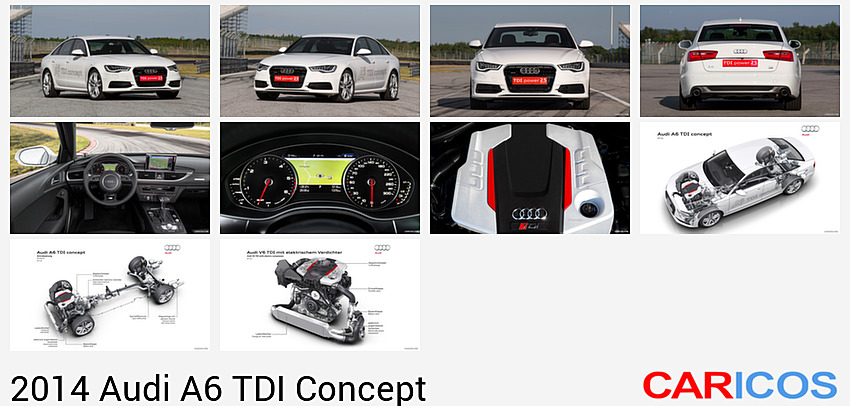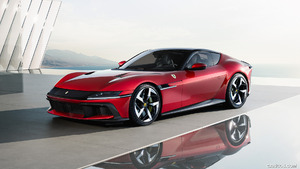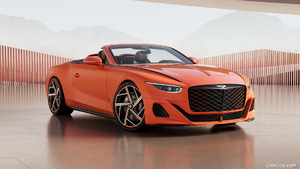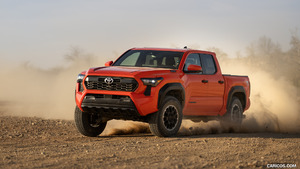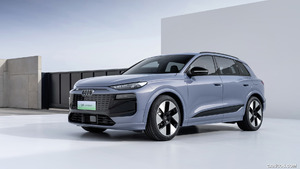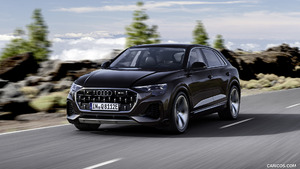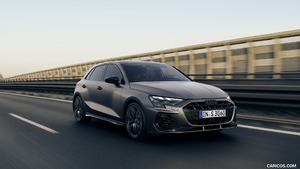Audi A6 TDI Concept
Electric biturbo and hybridization
The TDI engine gets its power from the boost pressure developed by the turbocharger, which is dependent on the energy of the exhaust. The electric biturbo breaks this dependency. Its supplemental electric compressor enables a rapid buildup of boost pressure and high torque even at low engine speeds. 25 years after the invention of the TDI, Audi is now taking the next big step and making the diesel engine even more emotional and sporty.
In addition to the classic exhaust gas turbocharger, the electric biturbo has a second charger arranged in series. Instead of a turbine wheel, it contains a small electric motor that applies a maximum drive power of seven kW to accelerate the compressor wheel to maximum speed within 250 milliseconds.
The electric compressor is downstream of the intercooler. At very low engine speeds and thus correspondingly low exhaust gas energy at the turbocharger, the bypass valve closes and the air is routed to the electric compressor. This can be flexibly and compactly integrated into a variety of forced induction concepts.
Audi has built two technology studies with the electric biturbo: The Audi A6 TDI concept is equipped with the new 3.0 TDI monoturbo; the Audi RS 5 TDI concept with the 3.0 TDI biturbo. In steady-state – no additional impetus – the monoturbo produces a constant 240 kW (326 hp) and 650 Nm (479.4 lb-ft) of torque, the latter between 1,500 and 3,500 rpm. The electric compressor fills the gap in the torque curve below this range and provides for fast response and excellent elasticity. Acceleration from 60 to 120 km/h (37.3 to 74.6 mph) in sixth gear is reduced from 13.7 to 8.3 seconds.
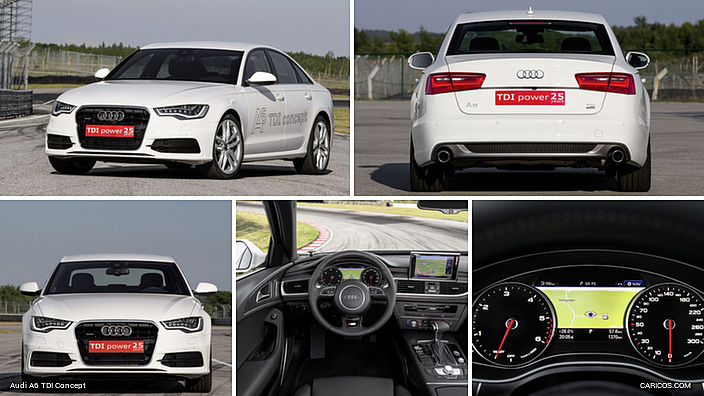 2014 Audi A6 TDI Concept
2014 Audi A6 TDI Concept
The modified V6 biturbo in the Audi RS 5 TDI concept is even more impressive. It produces 283 kW (385 hp), and peak torque of 750 Nm (553.2 lb-ft) is available between 1,250 and 2,000 rpm. The electric compressor provides for tremendous power when starting off. If the driver stays on the accelerator, 100 km/h (62.1 mph) is reached in roughly four seconds. Boost pressure is available immediately after each change of gears thanks to the intelligent interplay between the two turbochargers.
The most impressive aspect of both technology studies, however, is the rapid, nearly seamless development of power even at low engine speeds. The strengths of the electric biturbo lie exactly where they make the most sense in everyday driving. It eliminates the need for constant downshifting, keeping engine speeds low. Sporty drivers will really appreciate the passing power and immediate delivery of power when exiting a curve. The electric biturbo is suitable for use in many Audi model series as well as with gasoline engines, in principle. It will soon enter series production in the TDI sector.
The energy required to drive the electric compressor is largely generated by recuperation during coasting phases, so that the end effect is essentially neutral with regard to energy consumption. It is supplied with power via a separate 48-volt electrical system, complete with its own compact lithium-ion battery in the trunk and power electronics. A DC/DC converter provides the connection to the 12-volt electrical system.
The new 48-volt subsystem offers major advantages. It can supply the high-performance electrical consumers of the future – thermoelectric heating elements, electromechanical rear brakes or engine auxiliaries such as oil and water pumps – with more energy than the 12-volt electrical system. Higher voltage means lower currents, allowing for smaller cable cross-sections and thus reduced weight. Audi plans to introduce the 48-volt electrical subsystem to multiple model series shortly.
In parallel to this, the Audi engineers are also working to electrify the drivetrain. There will be a tailored solution for each customer. The hybrid platform offers numerous solutions, from the electric biturbo to the TDI with plug-in technology. The combination with the electric motor opens up new possibilities. It enables targeted shifting of the load points to the benefit of both fuel consumption and emissions behavior. In urban traffic, the electric motor provides for zero-emissions power.
Another interesting electrification option is the electric quattro drive, the e-quattro. Audi has shown this in many of its show cars. The TDI and an electric motor drive the front wheels, while a second electric motor in the rear drives the rear wheels. The battery can be installed in part in the floor tunnel.

